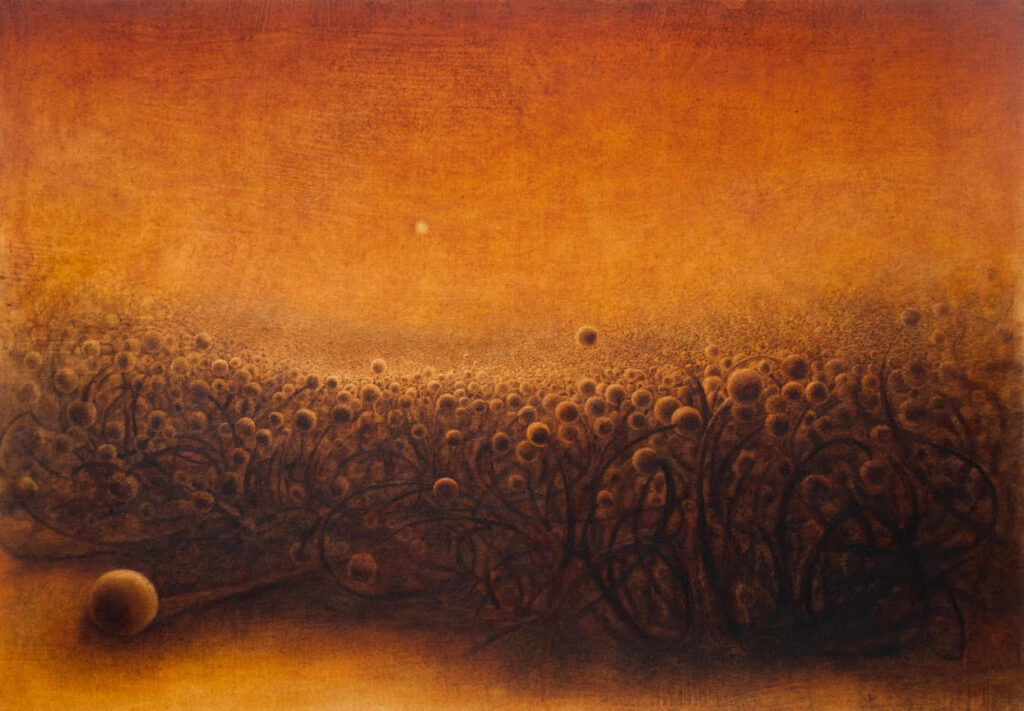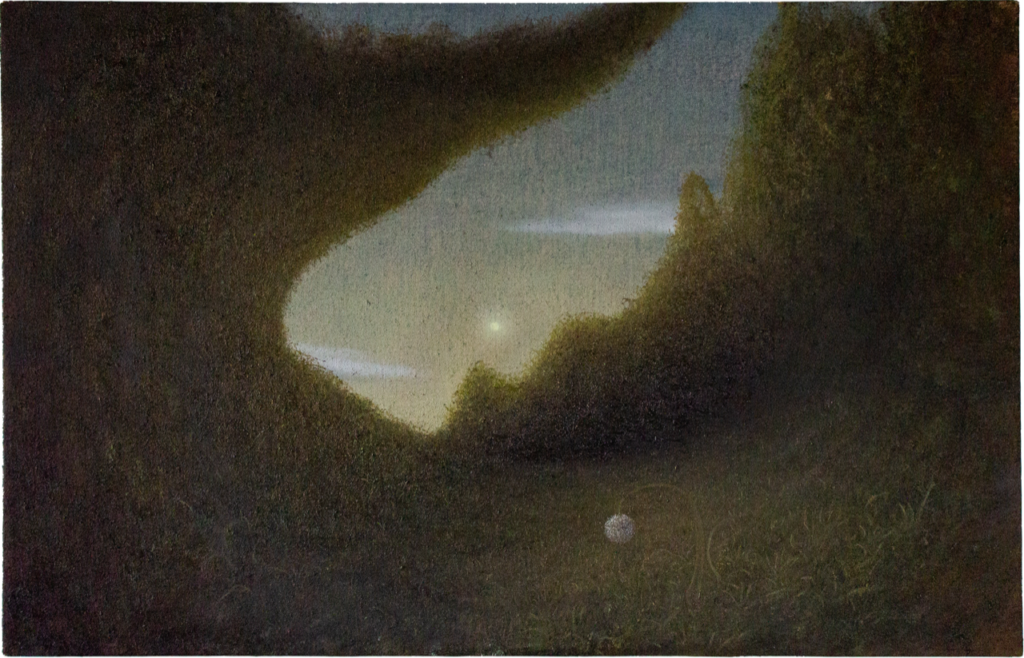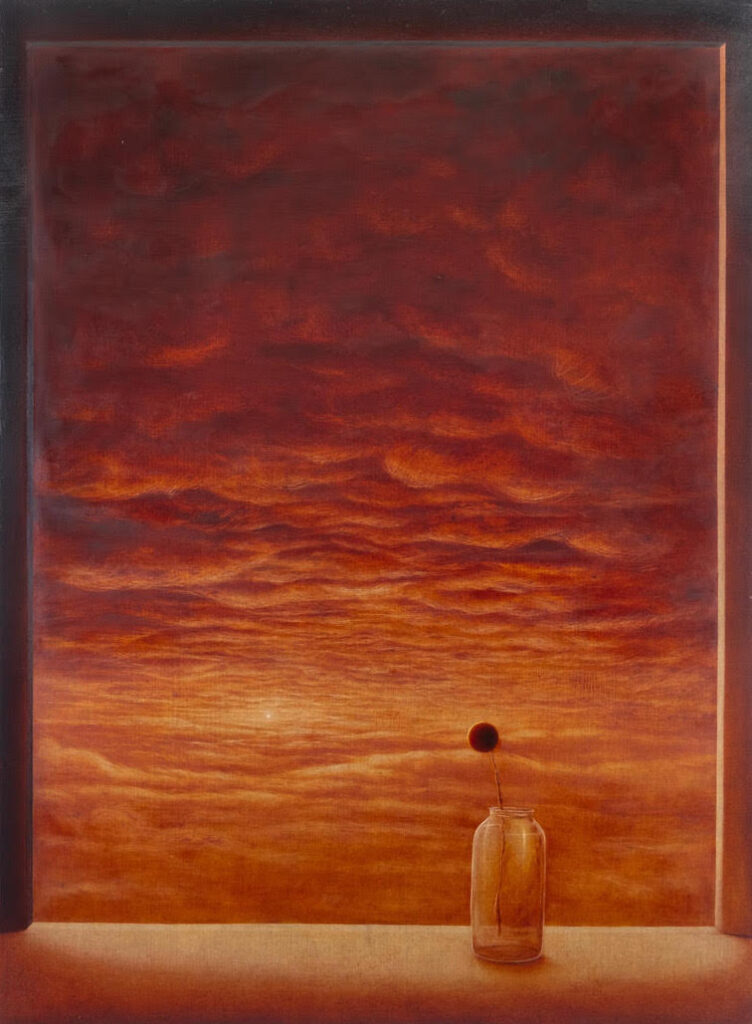December 21, 2023
Artist to Watch
PATRICIA GEYERHAHN

NB: Can you tell us about some of your earliest memories of art and your recent experience completing your BFA?
PG: My grand dad on my father’s side is an art collector in Brazil so I was exposed to a lot of art from a very early age. His house and our house were used as storage for art, so there were always paintings around. My grandmother was an artist too, a painter, poet, musician, and philosopher. She was probably the person who inspired me the most to become an artist. Although she passed away before I was born, I heard stories and was sort of identified with her a lot by my parents. I would be drawing all the time when I was younger, and they would be like “Oh! you’re just like her!”
In terms of my BFA I was doing a dual degree with philosophy and since I was partially educated during the pandemic, at times there was a big limit in terms of what I could make. Being forced to stay in made me obsessed with the idea of ‘internal worlds’ and ‘virtual worlds,’ ‘places’ beyond those that we physically exist within, and so I was painting a lot of smaller works that I could escape into.
Later on for my thesis, my sense of self felt very far from my body, so for my thesis I tried to bring myself back to my body through bigger body movements, therefore working at a larger scale. I went from painting small (more intimate) pieces where I was really isolated in my practice, where my movements and gestures were really small, to larger size canvases depicting more complex relationships. In some of my earlier works, I have this bulb-like kind of flower based on a dandelion, a symbol of a possible wish, that came back during my most recent work.

NB: What’s your process like? When you begin a new painting or a series of works, where do you draw your inspiration from?
PG: I think primarily it’s from emotion, because my works are metaphors of people and relationships. In terms of what the work looks like II’ll often get a vision or an image in my head that I think comes from my subconscious. There’s something about it that just really speaks to me even if I don’t fully understand it, so I try to understand as I work on it. There are times I try to depict ideas from a more intellectual route, where I think about how to use this language that I created for myself to illustrate an idea I think is important.

NB: Well, that’s actually a great segway into talking about your most recent show and recent body of work Doppelganger that was on view at Andrew Reed Gallery last month. Can you tell us a little bit about that?
PG: It was an amazing opportunity, my first solo show right out of my BFA. It started with Andrew seeing a piece from my thesis and really liking the work. We met up and after talking a bit he included some pieces in a group show and a few months later he asked me if I was interested in a solo show at his Tribeca gallery space. I was like ‘Oh my God, I can’t say no!’ And so he was like ‘OK great, it’s in four months and I think it should be a whole new body of work’. So it was a lot, and since I didn’t have much time I just pulled from whatever ideas I was thinking of at the time: After my thesis I was thinking about how I reduced all subjects to just this one icon, a sort of repetition or symbol, which made me think about how we’re all just people and we are all the same to some extent. There were also some painting marks I had noticed I kept making over and over, very repetitively without thinking. They were becoming copies of each other because I kept using that same motion, same symbols and color palette—so the word ‘doppelgangers’ kept playing in my mind.
Also, when I was brainstorming the show with Andrew we spoke about loss and it stuck with me. I began thinking about how, even if you lose a person, they still have an imprint on you and you have an imprint on them. In a way, if you spend time with someone for long enough, it’s almost like you become mirrors of each other in many ways, especially if you spend a lot of time with that person, or are codependent and enmeshed.

NB: Why don’t we talk about your use of color and how that is related to the themes that you explore in your paintings?
PG: The kind of red I have recently been working with in my thesis and Doppelganger was a bit of a random thing that just stuck with me. I heard this story on a podcast about a woman who had a fourth color cone (another red) in her eye. People usually have three color cones, and we see colors differently than other animals which have different sets of color cones. This woman specifically could see more reds than the average person, so when she looked at the sky she said she saw red in the sky.
There was another story in that episode where a color scientist asked his kid ‘what color is the sky?’ and the kid couldn’t answer, he hadn’t been indoctrinated into just labeling the sky ‘blue’. Red became this color my mind associated with whats beyond things, or with things being more than what they appear to be. When I paint with red, when I use repetitive symbols, I’m reducing the things I’m painting, like when I’m painting a flower but it’s just a ball and a stem, the simplicity leaves room for interpretation, for the stem and ball to be a head and a body, for red to be red but also subtly complex.
I also have a background in black and white photography, so I do tend to see things in light rather than in color, therefore ‘monochrome’ makes more sense to me. I was feeling very overwhelmed by color and limited by it because I felt like I had to do it correctly. There’s so much science to color theory I felt like it was holding me back to some extent because I’m a bit of a perfectionist.
NB: Can you tell us a little bit about your upcoming projects or exhibitions that you’re most excited about or are you in recovery mode?
PG: I’m in a little bit of a recovery mode. When you’re working in a big body of work you put away certain ideas, like random split offs that in this case didn’t necessarily make sense for Doppelganger, so I’m working on those pieces now that are fun and exciting to me but unrelated to a bigger project. Also, my partner Devin Düster is the one that made all the frames for the Doppelganger pieces, and I would like to learn how to make them myself.
I am also now represented by Andrew Reed Gallery, which is very exciting. So there will definitely be a few projects coming with him.

